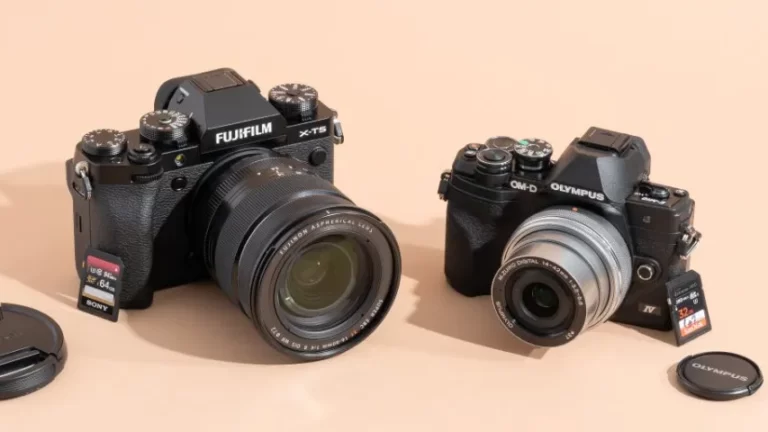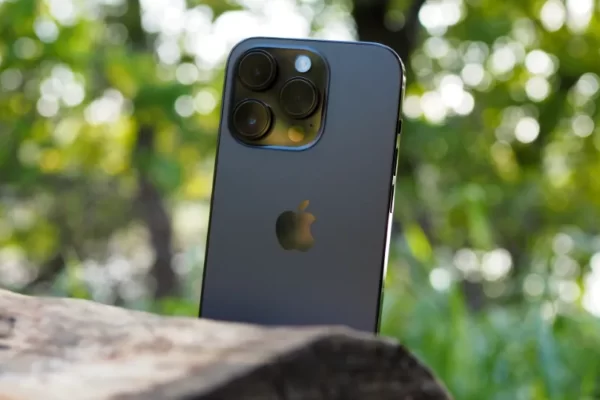Since they first appeared on the scene in the late 2000s, mirrorless cameras have completely changed the landscape of digital photography. They have a more streamlined and portable design than their DSLR counterparts and perform better because they don’t have a reflex lens to add weight. But what drives them, what are their advantages and disadvantages, and most importantly, are they worth your time? For you, we have all the solutions.
What Does Mirrorless Mean?
With the exception of size, a DSLR and a mirrorless camera may appear quite similar to the average person, but they function very differently. A DSLR (digital single-lens reflex) camera is a type of digital camera that does not have the large mirror or optical viewfinder. It shows you how your photo will appear using a single, interchangeable lens and a digital screen or electronic viewfinder (EVF). Depending on your needs, it might also have a mechanical shutter and be able to switch lenses.
The concept is straightforward: scene light passes through the lens, strikes the image sensor, and is converted into a digital signal. The signal is then transformed into a picture by the image processor, which you can view on the LCD screen or viewfinder. A mirrorless camera, as opposed to a DSLR, which uses a mirror to reflect light up to the optical viewfinder, allows the sensor to constantly see light, giving you a real-time preview of your shot.
In 2004, the printer manufacturer Epson invented the first true mirrorless camera. A digital rangefinder camera from Epson with a 6.1-megapixel APS-C sensor and Leica M-mount lenses. At launch, it cost $3,000 and was an expensive, rare beast. Since that time, mirrorless cameras have advanced and gotten more affordable, offering features like quick autofocus, silent operation, live preview, and high image quality. Presently, a wide variety of camera companies produce mirrorless cameras with various sensor sizes and lens mounts, challenging DSLRs in the market.
Why Should You Go for a Mirrorless Camera over DSLR?
Because they are smaller and lighter than DSLR cameras, mirrorless cameras are more portable and convenient to use. This is one of their main benefits. Additionally, because mirrorless cameras have fewer moving parts, they are more durable and quieter.
Due to their ability to record using the entire sensor area, as well as their quicker autofocus, higher frame rates, and more sophisticated features, mirrorless cameras also typically have better video capabilities than DSLR cameras. While most DSLR cameras are limited to 4K or lower, some mirrorless cameras can even record 8K video. Because of this, they are perfect for content producers, particularly in India for wedding photo shoots where a combination of photos and videos is needed.
Because they do not need to move a mirror up and down between shots, mirrorless cameras have another advantage over DSLR cameras: faster shooting speeds. They can now record more frames per second, which is advantageous for action or sports photography.
Because they have IBIS, mirrorless cameras arguably have better image stabilization than DSLRs. You can take clear pictures and videos without a tripod by using a feature called IBIS, which stands for In-Body Image Stabilization. To counteract any hand movements, it works by moving the sensor inside the camera. In low-light conditions, you can use slower shutter speeds in order to prevent noisy images. Your video footage is also smudge-free thanks to IBIS, which gives it a more polished appearance. Although not found in all mirrorless cameras, IBIS is one of the benefits mirrorless cameras have over DSLRs.
Are There Any Downsides to Mirrorless Cameras?
While mirrorless cameras receive a lot of praise for their small size, quick shooting speed, and video capabilities, they also have some disadvantages when compared to DSLR cameras. The main drawback is the short battery life. Compared to DSLR cameras, which employ an optical viewfinder (OVF) that reflects the image from the lens, mirrorless cameras use an electronic viewfinder, which uses more power. This means that mirrorless cameras need to be charged more frequently or to have spare batteries, particularly when traveling or taking part in long shoots.
The availability of lenses is another drawback of mirrorless cameras. Although there are now more lenses available for mirrorless systems, DSLR cameras still have a wider selection of lenses, especially for specialized or niche applications. While mirrorless cameras frequently require adapters to use older lenses, DSLR cameras can use decades’ worth of lenses from previous generations.
However, the cost is the biggest negative. While the two types of cameras’ starting prices may be comparable right now, DSLRs do provide more for a lower price.
Read More: What Is A Lens Hood For?
Source: indianexpress





